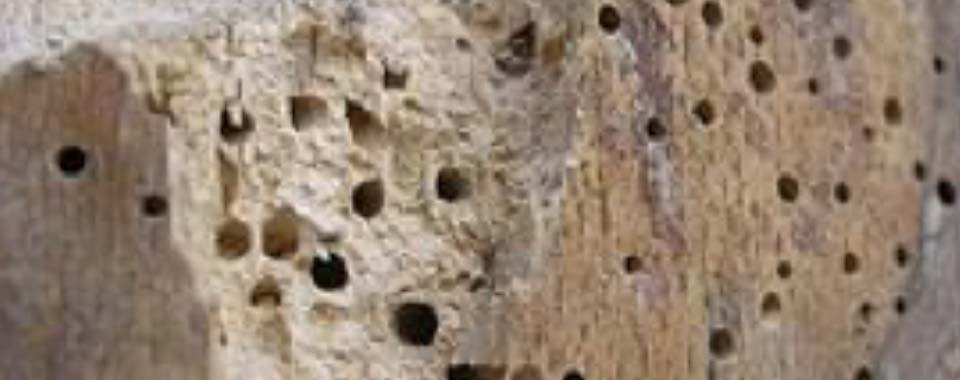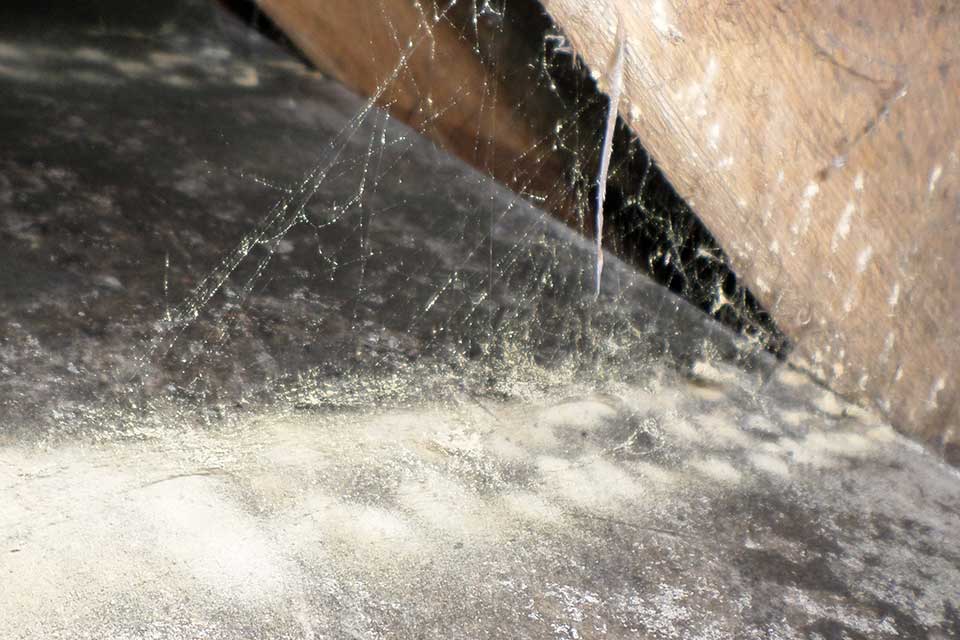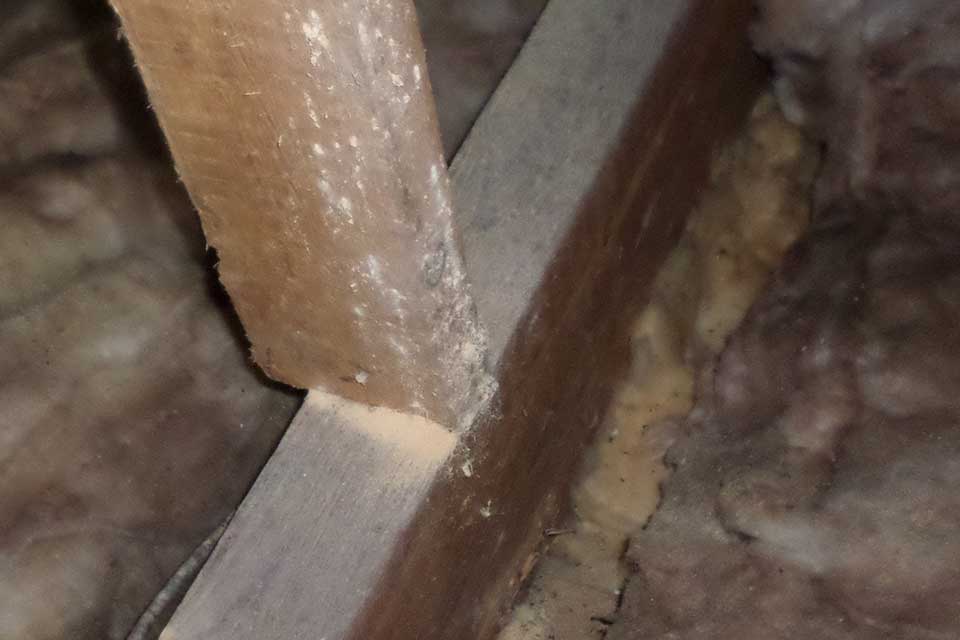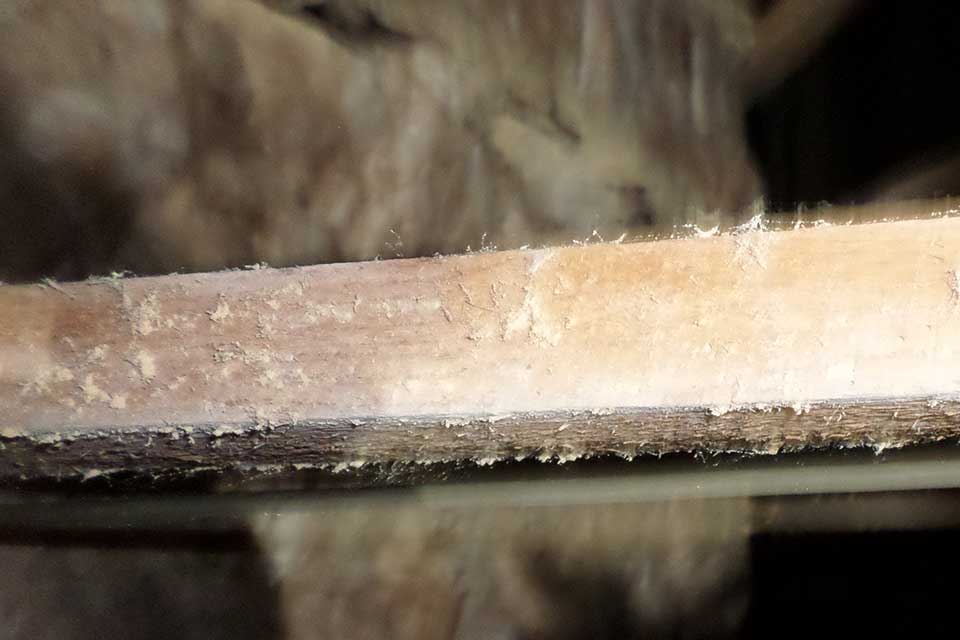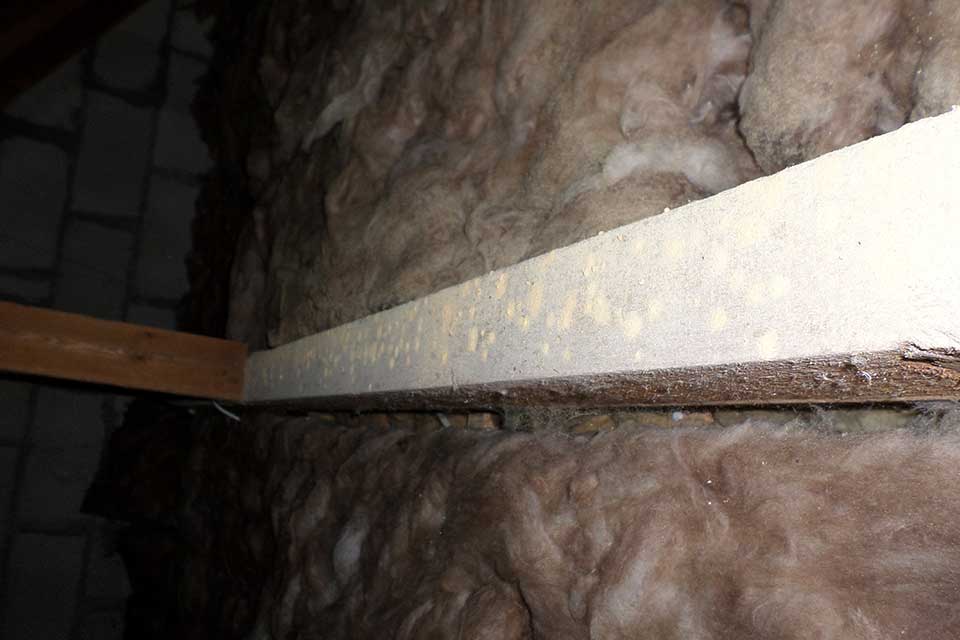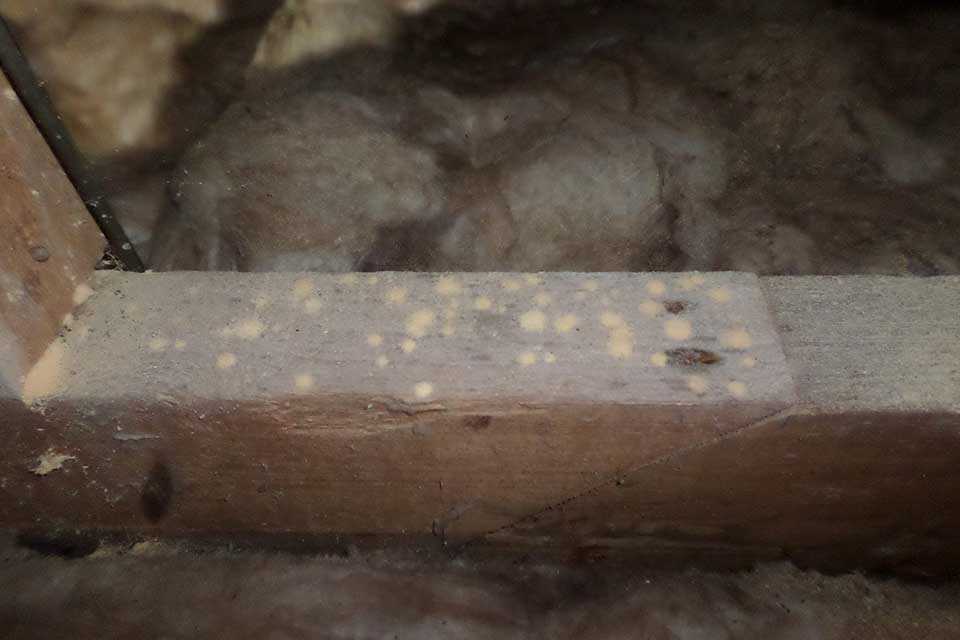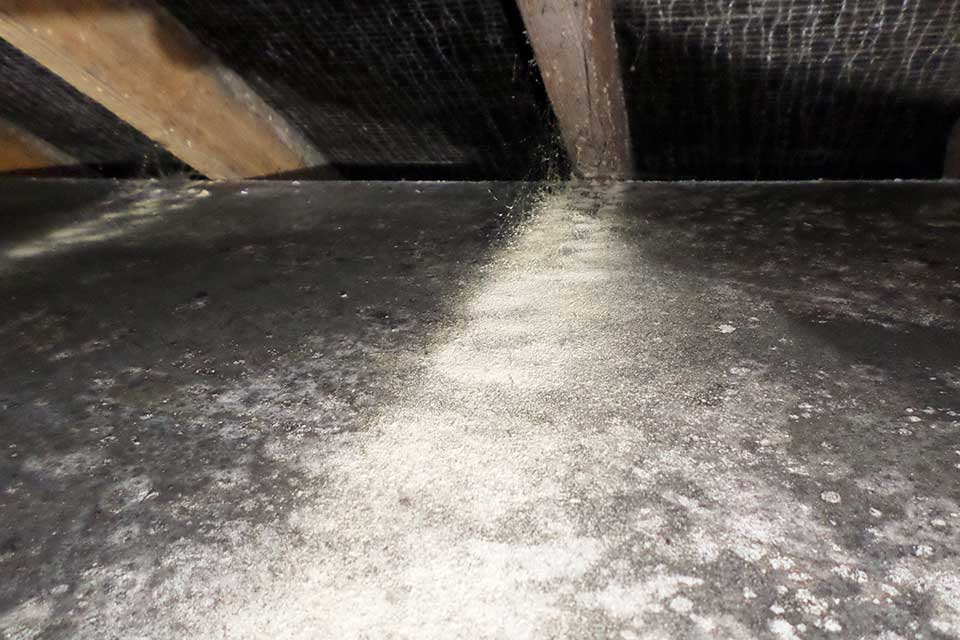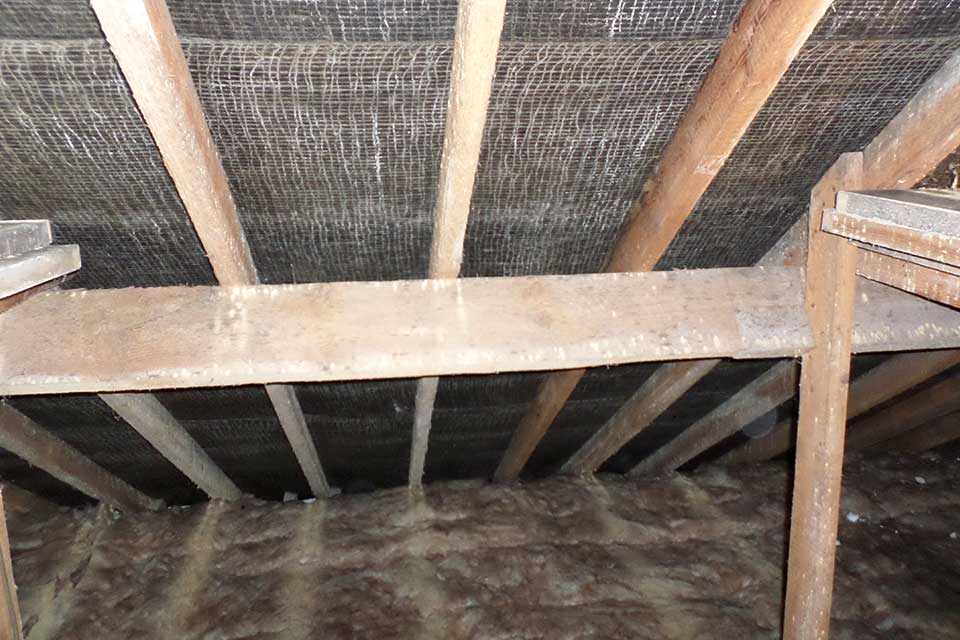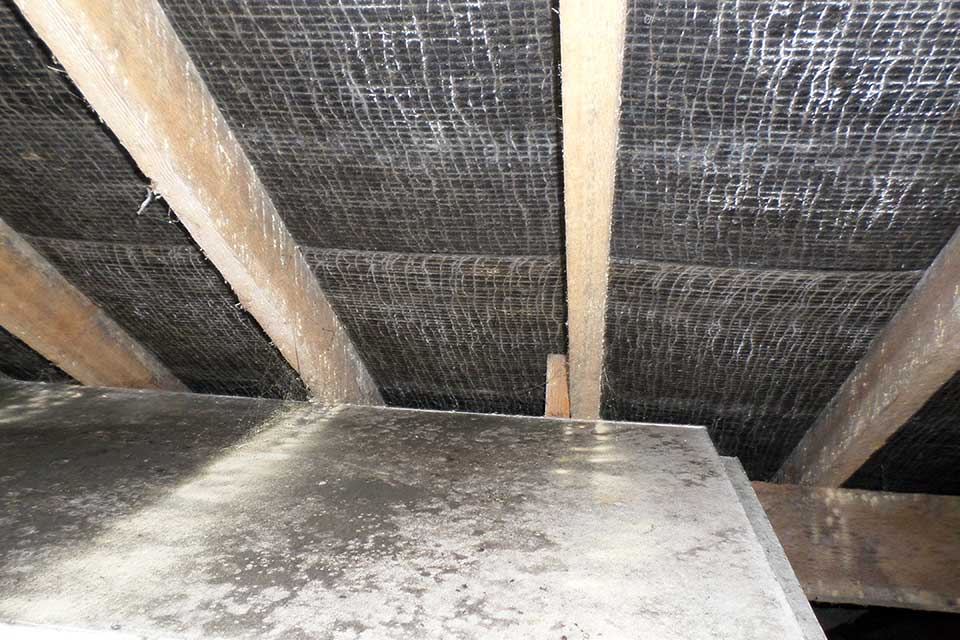
Cornwall Woodworm Treatment
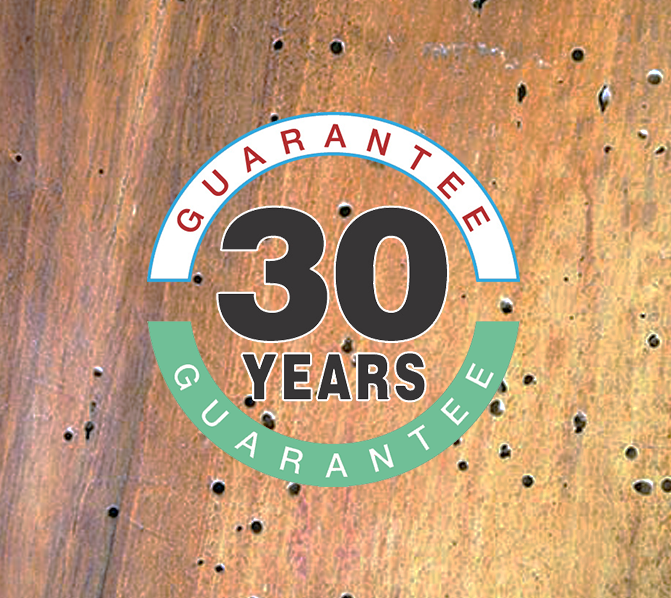
Woodworm
Woodworm is the wood-eating larvae of many species of beetle.
It is also a generic description given to the infestation of a wooden item (normally part of a dwelling or the furniture in it) by these larvae.
The moisture in the air condenses on cold surfaces, sometimes inside the walls. Buildings with poorly insulated walls are very prone to this problem.
It often causes damage similar to damp in a building and often appears in similar places.
This is because it occurs in the “dead air” pockets that accumulate in both horizontal and vertical corners (i.e. out of circulating air patterns).
Woodboring beetles with larvae commonly known as woodworms include:
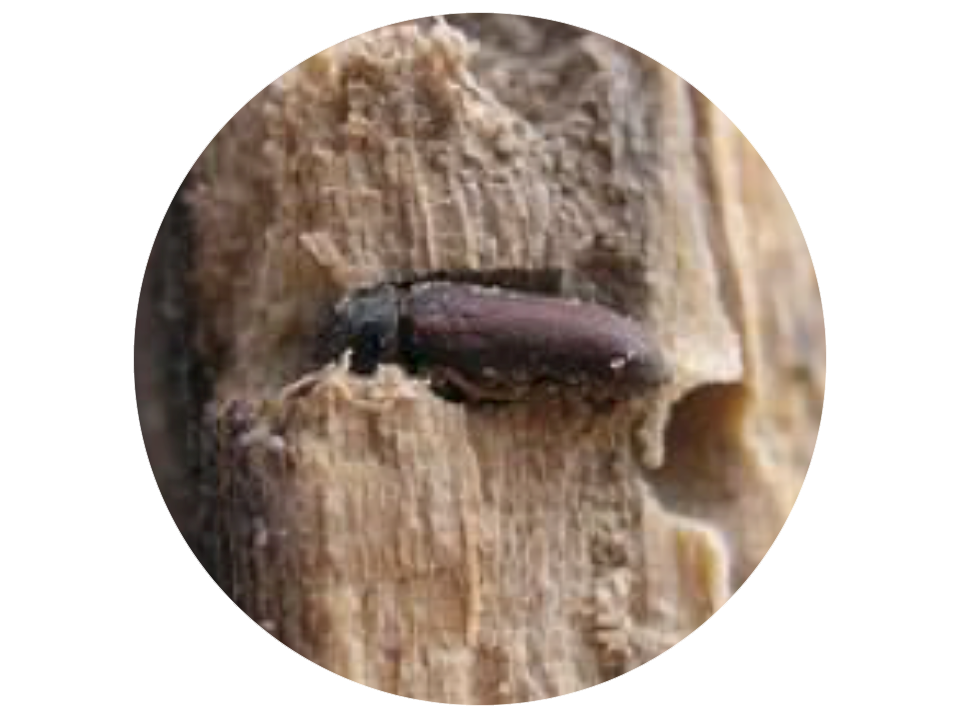
Woodboring beetles with larvae commonly known as woodworms include:
Manifestation
Signs of woodworm usually consist of holes in the wooden item, with live infestations showing powder (faeces), known as frass, around the holes.
The sizes of the holes vary, but are typically 1mm to 1.5mm in diameter for the most common household species.
Adult beetles which emerged from the wood may also be found in the summer months.
Typically the adult beetles lay eggs on, or just under the surface of, a wooden item.
The resulting grubs then feed on the wooden item causing both structural and cosmetic damage, before pupating and hatching as beetles which then breed, lay eggs, and repeat the process causing further damage.
As the beetles evolved consuming dead wood in various forest habitats, most grubs, if not all, typically require that the wooden item contain higher moisture content than is normally found in wooden items in a typical home.
A building with a woodworm problem in the structure or furniture may well also have a problem with excess damp. The issue could be lack of ventilation in a roof space, cellar or other enclosed space within an otherwise dry building.
Whilst damp is a leading factor resulting in woodworm some species of wood boring insect, such as the Wood boring weevil, are only found in instances where fungal rot has already begun to occur.
Treatment
Woodworm infestation is generally controlled with chemical insecticides.
However, it is also advisable to investigate and solve possible damp issues, as dry wood is not usually affected, and wood that remains damp may be re-infected at a later date.
“Safest available chemicals used as we care about you, your property and the environment”
